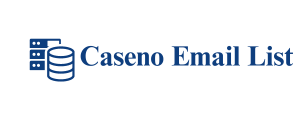8 Critical Marketing KPIs to Measure Success
Those who work in the marketing industry are fond of highlighting KPIs, short for key performance indicators. In fact, industry experts insist KPIs tell the real story of a marketing campaign’s success or lack thereof. Fail to analyze marketing KPIs with consistency and you won’t understand whether your campaign is a legitimate success, stagnating, or serving as nothing but a money pit.
RELATED ARTICLE: HOW TRADITIONAL BUSINESSES BENEFIT FROM DIGITAL MARKETING
Here’s the inside scoop on the best KPI marketing metrics to measure marketing success.
1. Cost Per Lead
The amount of money spent to nab a new lead through marketing material is a critically important business metric. A lead is a stranger who takes an interest in your business’s value offering.
Collect information about your leads, calculate the cost to bring each new lead into the fold as a potential client, and you’ll have a better sense of the true efficacy of each marketing initiative.
2. Unique Visitors
Sort through the connected TV advertising statistics and you’ll find that unique visitors to your website stemming from marketing campaigns are of the utmost importance. It is in your interest to keep track of the visitors to your landing page and other components of your online footprint. These metrics will give you a sense of how many are returning phone number database customers versus unique customers. Returning customers are unquestionably valuable. However, unique visitors demonstrate the true efficacy of your marketing efforts.
3. Retention Rate
Though acquiring 6 mistakes to avoid when developing a content marketing plan new customers is essential for business success, it is possible to keep an enterprise afloat for a lengthy period of time with heightened retention. Therefore, focus on retaining your current customers and do your part to boost your retention rate. By doing so, you’ll maximize the value of the money you invested in marketing to attract those customers in the first place.
Moreover, pinpoint the types of customers most inclined to return to your business for additional purchases. Highlight what made them remain loyal. Then replicate those successful marketing efforts to boost your retention rate all the more.
4. Customer Acquisition Cost
Turn on Shark Tank and you’ll hear Kevin “Mr. Wonderful” O’Leary harp on the importance of customer acquisition cost (CAC). The CAC metric measures the amount of money you invested in marketing efforts to acquire a customer.
For example, if your CAC is egregiously high, you’ll burn through cash. But you can trim an elevated CAC rate with a focus on comparably cost-efficient organic marketing methods such as search engine optimization (SEO).
5. Landing Page Conversions
A polished landing page is not enough in and of itself. In short, the landing page must convert. A landing page that fails to spur leads won’t serve its intended purpose, regardless of the level of traffic it receives or the manner in which it is designed.
Check the conversion rate of the page, compare that rate to the level of traffic, and make changes as necessary. Rely on A/B testing to facilitate hiking your conversion rates. Altering the page text, colors, call to action, and other subtleties has the potential to make a massive impact on conversions.
6. Follower Growth
Follower growth is an essential KPI to track, especially as a marketing campaign hits its stride. Heighten brand awareness through audience interactions, keep tabs on your follower progression or regression, and strategize as necessary. Running sponsored campaigns is one such strategic addition that has the potential to dramatically boost follower counts in surprisingly little time.
7. Form Conversion Rate
Convert unknown online uk email database visitors into potentially profitable leads by way of several means, including forms. Forms are linked to value offers in response to a visitor’s submission of contact information.
However, these forms might not perform at the anticipated level for several reasons. For one, the offer might not be nearly as valuable as you originally anticipated. Requesting too much information pertaining to the offer also has the potential to sour potential customers.
The failure to communicate the value offering through the form or landing page is another common culprit. Try different copy types with A/B testing methods to get a sense of which performs optimally. Then alter the layout for visual appeal and make the necessary adjustments.

